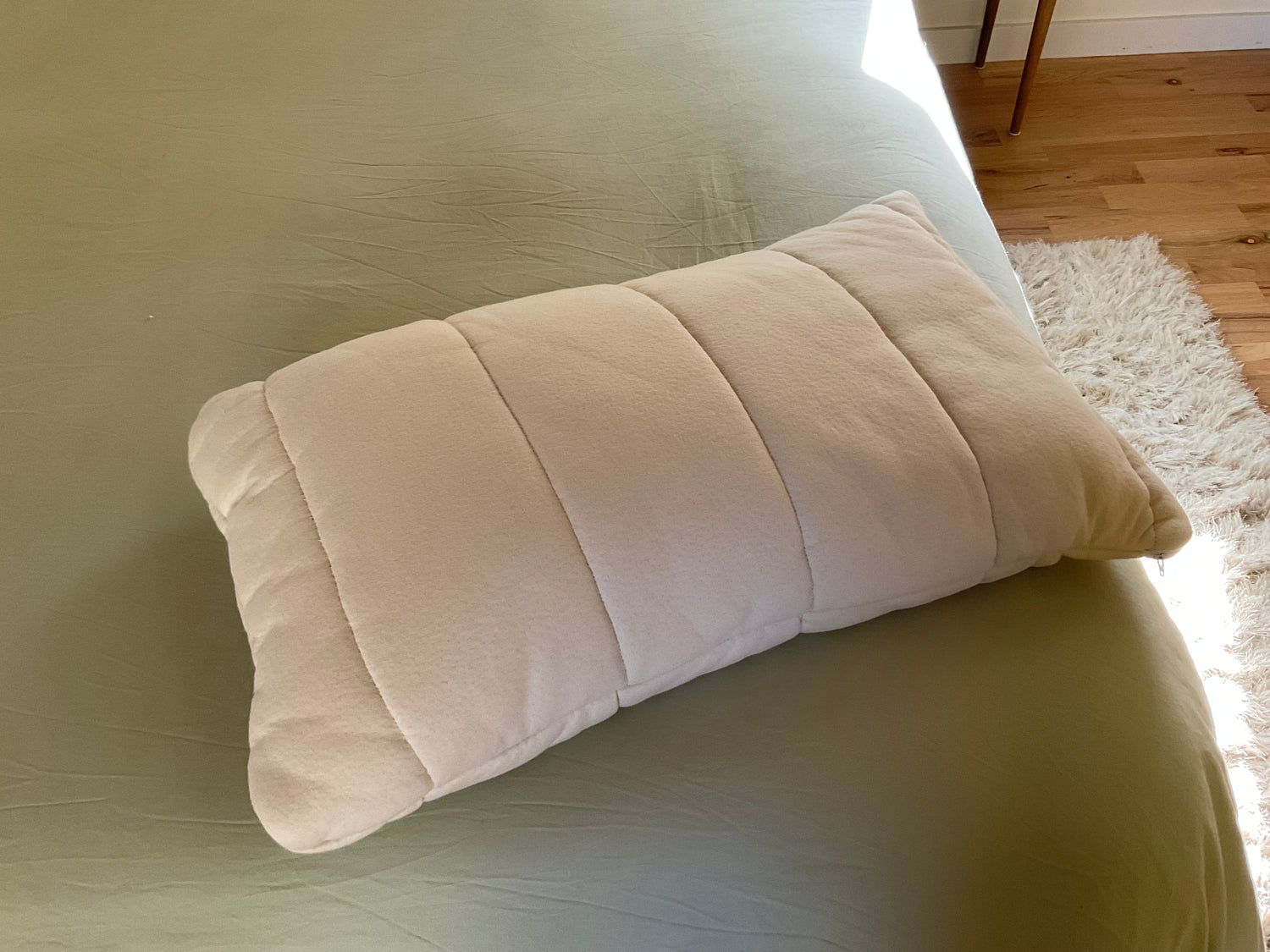
Why We Aren't Fans of Synthetic Latex Pillows
Latex is a great material for pillows, but only if it’s genuine latex from a rubber tree. Unfortunately, some ‘latex’ pillows are made using synthetic latex, which is a petroleum product.
Synthetic latex is not as durable as natural latex, meaning you’ll need to replace your pillow in around six years or sooner. In contrast, a natural latex pillow could easily last you 20 years or more. Synthetic latex also tears more easily, so you’ll need to be more careful with your pillow.
As for comfort, synthetic latex isn’t as springy as natural latex, and it typically continues to off-gas and smell like chemicals for months or even years. Some natural latex pillows smell a little rubbery at first but the smell tends to lessen and disappear altogether within just a few hours or days. In my experience, none of my latex pillows have had a strong smell, even if they've been wrapped in plastic for shipping.
Synthetic latex is a mixture of styrene and butadiene, both of which are volatile organic compounds (VOCs) that can harm health. According to the U.S. Environmental Protection Agency (EPA), styrene is associated with: effects on the central nervous system (CNS), headache, fatigue, weakness, and depression, hearing loss, peripheral neuropathy, and an increased risk of leukemia and lymphoma.
As for butadiene, the U.S. Occupational Safety and Health Association (OSHA), notes that this chemical may harm the central nervous system and reproductive health and development.
Synthetic latex is sometimes referred to as SBR (styrene-butadiene rubber), so watch out for that on product description.
You may see pillows made with ‘blended latex’, which can be code for synthetic latex mixed with some natural latex or other materials. As an example, Natura’s Ultimate Latex Pillow comprises: 30% natural rubber tree latex; 70% synthetic (styrene-butadiene) latex.


Leave a comment